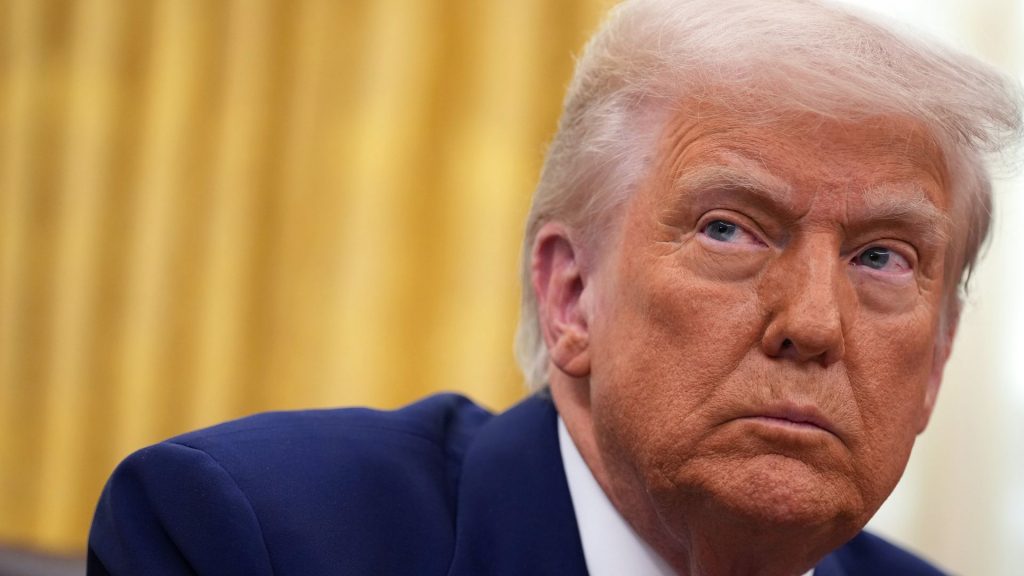Trump plans to ‘liberate’ US from foreign goods on April 2
Ella Greene March 30, 2025 0
- President Donald Trump has declared Wednesday, April 2, “Liberation Day,” during which he will roll out a comprehensive set of tariffs meant to revive the American economy. While Trump has long targeted Mexico, China and Canada with his tariff plans, the administration has since added other producers to the list including the European Union, South Korea, Brazil, India and any country that imports oil from Venezuela.
- On the list of affected products are imported pharmaceutical drugs, copper and lumber.
- The Trump administration is pitching tariffs as a one-time “price adjustment” that doesn’t threaten inflation, though economic forecasts still suggest that tariffs would largely hurt U.S. consumers and workers.
Full Story
President Donald Trump has declared Wednesday, April 2, “Liberation Day.” The occasion will be marked by the administration’s rollout of a comprehensive set of tariffs ostensibly meant to revive the American economy and balance its $1.2 trillion trade deficit by “liberating” the U.S. from its reliance on foreign goods.
While Trump has already levied, pulled back and levied again tariffs on countries that made up much of his stump speech during the 2024 campaign –– Canada, Mexico and China –– he’s recently announced plans to target imported goods from other producers and nations, including the European Union, South Korea, Brazil, India and, more broadly, any country that imports oil from Venezuela. These countries, according to Trump, would face “reciprocal” tariffs, in which the U.S. would match the rates they charge.
“This is the beginning of Liberation Day in America,” Trump said. “We’re going to charge countries for doing business in our country and taking our jobs, taking our wealth, taking a lot of things that they’ve been taking over the years. They’ve taken so much out of our country, friend and foe. And, frankly, friend has been oftentimes much worse than foe.”
What is the scope of Trump’s latest tariffs?
On the list of targeted products are imported pharmaceutical drugs, copper and lumber, according to The Associated Press. Among other goods such as steel and aluminum, the price of vehicles could increase by an average of $4,711, according to one estimate. Likewise, Columbus, Ohio Mayor Andrew Ginter, citing more expensive building materials, says median home prices could go up by $21,000, exacerbating an already difficult housing market.
Nevertheless, Trump views higher prices on things like cars as integral to bringing manufacturing back to the U.S. and reviving American prosperity, while reducing the country’s trade deficit.
“I hope they raise their prices, because if they do, people are gonna buy American-made cars,” Trump said during an interview with NBC News on Saturday, March 29. “I couldn’t care less because if the prices on foreign cars go up, they’re going to buy American cars.”
What are world leaders saying?
Global leaders have largely condemned Trump’s anticipated tariffs. Canada, under newly appointed Prime Minister Mark Carney, has already announced its intentions to levy retaliatory tariffs against the U.S., while French President Emmanuel Macron called the U.S. administration’s tariffs “not coherent,” and China’s Foreign Ministry spokesperson said there are “no winners in trade wars or tariff wars,” adding, “no country’s development and prosperity are achieved through imposing tariffs.”
It’s unclear how long Trump’s tariffs will last, as the president has already announced plans to impose tariffs on countries multiple times since retaking the White House, only to walk back those plans shortly thereafter. Speaking to reporters, Trump said he’s “open” to working with countries that are targeted.
“I’m certainly open to it, if we can do something,” Trump told reporters. “We’ll get something for it.”
Tariffs vs. Inflation
Treasury Secretary Scott Bessent has pitched tariffs as a one-time “price adjustment” that will not contribute to inflation. “The economic program is a whole of government, holistic program, and I think that we could get a one-time price adjustment,” Bessent said. This, however, assumes that the tariffs work as intended the first time around, and do not result in an escalating retaliatory trade war with other countries.
Even still, as most economic forecasts have highlighted since Trump first floated the idea of tariffs on the campaign trail, it is the American consumer and worker who would largely pay the price.
“There is a chance tariffs on goods begin to filter through to the pricing of services,” said Samuel Rines, a strategist at WisdomTree. “Auto parts get more expensive, then auto repair gets more expensive, then auto insurance feels the pressure. While goods are the focus, tariffs could have a longer-term effect on inflation.”
Similarly, Phillip Braun, a finance professor at Northwestern University’s Kellogg School of Management, said, “I don’t see anything positive about Liberation Day. It’s going to hurt the U.S. economy. Other countries are going to retaliate.”
On Friday, the Dow Jones was down 700 points over fears of inflation of tariffs.
Related Stories
Ella Rae Greene, Editor In Chief
Ella Greene
Ella and the staff at Clear Media Project (CMP) curate these articles.
Unless otherwise noted CMP does not write these articles.
The views, thoughts, and opinions expressed in the articles published on this blog belong solely to the original authors and do not necessarily reflect the views of the blog owner. The blog owner does not claim ownership of the content shared by contributors and is not responsible for any inaccuracies, errors, or omissions.
All rights and credits goes to its rightful owners. No Copyright Infringement is intended. If you believe any content infringes on your rights, please contact us for review and potential removal.





